 W
WAkabeko is a legendary cow from the Aizu region of Japan, who inspired a traditional toy. Aizu legend claims that the toys are based on a real cow used to build the Enzō-ji temple of Yanaizu in the ninth century.
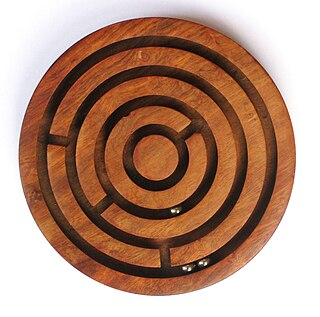 W
WBall-in-a-maze puzzles are dexterity puzzles which involve manipulating either a maze or one or several balls so that the ball or balls are manoeuvered towards a goal. Toys like this have been popular since "Pigs in Clover" was invented by Charles Martin Crandall in the 1880s, with the patent being applied for in 1889.
 W
WBauernroulette is a game that was apparently invented in Germany, where several companies sell it. The name Bauernroulette indicates it is a "poor man's roulette", since Bauer is German for 'peasant', 'farmer' or 'one of a chiefly European class of agricultural laborers'. In Bauernroulette, a spinning top is spun in the middle of a wooden circular playing surface that contains six wooden balls. The balls bounce off the top in random directions and sometimes land within one of several hollow indentations within the surface, or pass through a small hole into chambers that are located outside the spinning surface area. Typically, the most points are scored by landing balls within these outer chambers. Skilled players are often able to spin the top such that it remains in motion for more than thirty seconds.
 W
WBird of Happiness also called a "Pomor dove" is the traditional North Russian wooden toy, carved in the shape of a bird. It was invented by Pomors, the inhabitants of the coasts of the White and Barents Seas. It is suspended inside a house, guarding the family hearth and well-being. From the movement of warm air they revolved in a circle.
 W
WA burr puzzle is an interlocking puzzle consisting of notched sticks, combined to make one three-dimensional, usually symmetrical unit. These puzzles are traditionally made of wood, but versions made of plastic or metal can also be found. Quality burr puzzles are usually precision-made for easy sliding and accurate fitting of the pieces. In recent years the definition of "burr" is expanding, as puzzle designers use this name for puzzles not necessarily of stick-based pieces.
 W
WChannapatna toys are a particular form of wooden toys and dolls that are manufactured in the town of Channapatna in the Ramanagara district of Karnataka state, India. This traditional craft is protected as a geographical indication (GI) under the World Trade Organization, administered by the Government of Karnataka. As a result of the popularity of these toys, Channapatna is known as Gombegala Ooru (toy-town) of Karnataka. Traditionally, the work involved lacquering the wood of the Wrightia tinctoria tree, colloquially called Aale mara (ivory-wood).
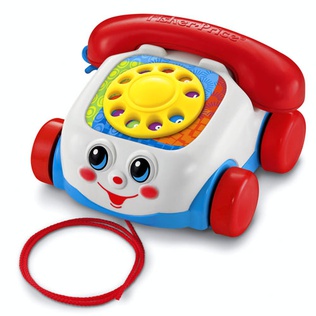 W
WThe Chatter Telephone is a pull toy for toddlers 12 to 36 months of age. Introduced in 1961 by the Fisher-Price company as the "Talk Back Phone" for infants and children, which was updated to the name Chatter Telephone in 1962, is a roll along pull toy. It has a smiling face, and when the toy is pulled, it makes a chattering sound and the eyes move up and down. The toy has a rotary dial that rings a bell, and was conceived as a way to teach children how to dial a phone.
 W
WCup-and-ball or ring and pin is a traditional children's toy. It is generally a wooden handle to which a small ball is attached by a string and that has one or two cups, or a spike, upon which the player tries to catch the ball. It is popular in Spanish-speaking countries, where it is called by a wide number of names, and was historically popular in France as the bilboquet. A similar toy with three cups and a spike called kendama is very popular in Japan and has spread globally in popularity.
 W
WA Dalecarlian horse or Dala horse is a traditional carved, painted wooden statue of a horse originating in the Swedish province of Dalarna (Dalecarlia). In the old days the Dalecarlian horse was mostly used as a toy for children; in modern times it has become a symbol of Dalarna, as well as of Sweden in general. Several types of Dalecarlian horses are made, with distinguishing features common to the locality of the site where they are produced. One particular style has, however, become much more common and widespread than others. It is stoutly carved and painted bright red with details and a harness in white, green, yellow and blue.
 W
WA dreidel or dreidle is a four-sided spinning top, played during the Jewish holiday of Hanukkah.
 W
WThe Froebel gifts are educational play materials for young children, originally designed by Friedrich Fröbel for the first kindergarten at Bad Blankenburg. Playing with Froebel gifts, singing, dancing, and growing plants were each important aspects of this child-centered approach to education. The series was later extended from the original six to at least ten sets of Gifts.
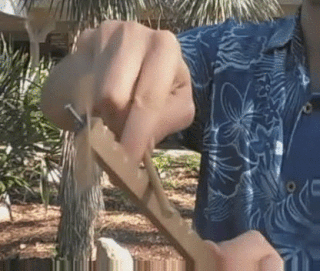 W
WA gee-haw whammy diddle is a mechanical toy consisting of two wooden sticks. One has a series of notches cut transversely along its side and a smaller wooden stick or a propeller attached to the end with a nail or pin. This stick is held stationary in one hand with the notches up, and the other stick is rubbed rapidly back and forth across the notches. This causes the propeller to rotate. Sometimes also known as a ouija windmill, a hoodoo stick or a VooDoo stick. The word whammy is sometimes whimmy and the word diddle sometimes doodle, giving it three possible other names, and the gee-haw may also be dropped.
 W
WHabermaaß GmbH is a German toy manufacturing company based in Bad Rodach, Bavaria. The company defines itself as an “Inventor for inquisitive minds”, offering a broad selection of products such as wooden and textile toys, home furnishings and accessories for babies and children. Today the company is still a family run company, under the leadership of the managing partner Klaus Habermaaß and the managing director Harald Grosch.
 W
WA hobby horse is a child's toy horse. Children played at riding a wooden hobby horse made of a straight stick with a small horse's head, and perhaps reins, attached to one end. The bottom end of the stick sometimes had a small wheel or wheels attached. This toy was also sometimes known as a cock horse or stick horse.
 W
WHoop rolling, also called hoop trundling, is both a sport and a child's game in which a large hoop is rolled along the ground, generally by means of an object wielded by the player. The aim of the game is to keep the hoop upright for long periods of time, or to do various tricks.
 W
WA Jacob's ladder is a folk toy consisting of blocks of wood held together by strings or ribbons. When the ladder is held at one end, blocks appear to cascade down the strings. This effect is a visual illusion which is the result of one block after another flipping over. It may be considered a kinetic illusion, where the blocks appear to change position when they do not. Its name Jacob's Ladder comes from the biblical ladder to heaven, mentioned in Genesis 28:12.
 W
WJig dolls are traditional wooden or tin-plate toys for adults or children. They are dolls with loose limbs that step dance or 'jig' on the end of a vibrating board or platform in imitation of a real step dancer. In London they were frequently operated by street entertainers or buskers. In England old soldiers from the Great War sometimes busked with them to supplement their meagre war pensions. Typically the dolls are between 20–30 cm (8–10 in) tall and are jointed at arms, hips and knees; some also have ankle joints. Today, jig dolls of one kind or another can be seen in the USA, Canada, the UK, Ireland, Europe, parts of Asia, and Australia.
 W
WA jigsaw puzzle is a tiling puzzle that requires the assembly of often oddly shaped interlocking and mosaiced pieces, each of which typically has a portion of a picture; when assembled, they produce a complete picture.
 W
WKapla is a construction set for children and adults. The sets consist only of identical wood planks measuring 11.7 cm x 2.34 cm x 0.78 cm. This 15:3:1 ratio of length:width:thickness is different than the dimensions used for traditionally proportioned building blocks, and are used for building features such as lintels, roofs and floors. They are known for their stability in the absence of fastening devices.
 W
WThe kendama is a traditional Japanese skill toy. It consists of a handle (ken), a pair of cups (sarado), and a ball (tama) that are all connected together by a string. On one end of the ken is a cup, while the other end of ken is narrowed down, forming a spike (kensaki) that fits into the hole (ana) of the tama. The kendama is the Japanese version of the classic cup-and-ball game, and is also a variant of the French cup-and-ball game bilboquet. Kendama can be held in different grips, and the tricks and combinations that can be done are limitless. The game is played by tossing the ball into the air and attempting to catch it on the stick point.
 W
WKEVA Planks are cuboid wooden block toys for children and adults. Each block is sized approximately 1/4 inch x 3/4 inch x 4 1/2 inches. The blocks are available for sale in maple, that is produced in the United States, and less expensive imported pine versions.
 W
WKlotski is a sliding block puzzle thought to have originated in the early 20th century. The name may refer to a specific layout of ten blocks, or in a more global sense to refer to a whole group of similar sliding-block puzzles where the aim is to move a specific block to some predefined location.
 W
WKokeshi , are simple wooden Japanese dolls with no arms or legs that have been crafted for more than 150 years as a toy for children. Originally from the northeastern region (Tōhoku-chihō) of Japan, they are handmade from wood, having a simple trunk and head with a few thin, painted lines to define the face. The body often has floral and/or ring designs painted in red, black, and sometimes green, purple, blue, or yellow inks, and covered with a layer of wax. One characteristic of kokeshi dolls is their lack of arms or legs. Since the 1950s, kokeshi makers have signed their work, usually on the bottom and sometimes on the back.
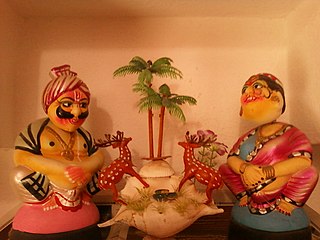 W
WKondapalli Toys are toys made of wood in Kondapalli of Krishna district, a nearby Vijayawada in the Indian state of Andhra Pradesh. Bommala Colony translates to Toys Colony in Kondapalli is the place where the art of crafting takes place. It was registered as one of the geographical indication handicraft from Andhra Pradesh as per Geographical Indications of Goods Act, 1999. These toys were one of the varieties of toys assembled in the houses during the festivals of Sankranti and Navratri and is referred as Bommala Koluvu.
 W
WLiberty Puzzles is a manufacturer of classic style wooden jigsaw puzzles based in Boulder, Colorado. It was founded in 2005 by Christopher Wirth and his business partner Jeffrey Eldridge, after Wirth’s family inherited several hand-cut wooden puzzles from the 1930s. Surprised by the value of hand-cut wooden jigsaw puzzles, Wirth decided to start a business using modern cutting technologies, with a goal of producing puzzles in the $100 range. Wirth is the son of former Colorado senator Tim Wirth.
 W
WLincoln Logs are an American children's toy consisting of square-notched miniature logs used to build small forts and buildings. They were invented around 1916 by John Lloyd Wright, second son of the well-known architect Frank Lloyd Wright. Lincoln Logs were inducted into the National Toy Hall of Fame in 1999. They are named for the eponymous sixteenth president of the United States who once lived in a log cabin.
 W
WMatador is a wooden toy set. The bricks are held together using special wooden sticks.
 W
WMatryoshka dolls are a set of wooden dolls of decreasing size placed one inside another. The name matryoshka, literally "little matron", is a diminutive form of the Russian female first name "Matryona" (Матрёна) or "Matryosha".
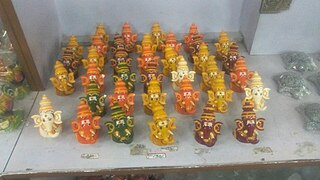 W
WNirmal toys are traditional Indian wooden toys made in the town of Nirmal in the Adilabad district in the newly formed state of Telangana in India. The Telugu movie “Radha krishna” is based on these toys
 W
WPeg wooden dolls, also known as Dutch dolls, are a type of wooden doll from Germany. They originated as simple lathe-turned dolls from the Val Gardena in the Alps. These dolls were sold undressed. Children would then make their clothing from scraps of fabric.
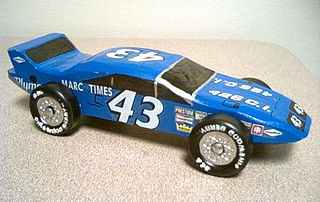 W
WThe pinewood derby is the wood car racing event of the Boy Scouts of America. Pinewood derbies are often run by packs of the Cub Scouts program. With the help of adults, Scouts build their own unpowered, unmanned miniature cars from wood, usually from kits containing a block of pine wood, plastic wheels, and metal axles. With the popularity of the pinewood derby, other organizations have developed similar events. Pinewood derby is a registered trademark of the BSA, so most use different names. Each derby has slightly different rules for making and racing their cars. A small industry has developed to provide organizer equipment and awards.
 W
WA rattleback is a semi-ellipsoidal top which will rotate on its axis in a preferred direction. If spun in the opposite direction, it becomes unstable, "rattles" to a stop and reverses its spin to the preferred direction.
 W
WA rocking horse is a child's toy, usually shaped like a horse and mounted on rockers similar to a rocking chair. There are two sorts, the one where the horse part sits rigidly attached to a pair of curved rockers that are in contact with the ground, and a second sort, where the horse hangs on a rigid frame by iron straps the horse moves only relative to the frame, which does not move.
 W
WA roly-poly toy, round-bottomed doll, tilting doll, tumbler or wobbly man is a round-bottomed toy, usually egg-shaped, that tends to right itself when pushed at an angle, and does this in seeming contradiction to how it should fall. The toy is typically hollow with a weight inside the bottom hemisphere. The placement of this weight is such that the toy has a center of mass below the center of the hemisphere, so that any tilting raises the center of mass. When such a toy is pushed over, it wobbles for a few moments while it seeks the upright orientation, which has an equilibrium at the minimum gravitational potential energy.
 W
WA snapper is a mechanical puzzle consisting of a pointed piece attached to a notched dowel and a hollow block with a secondary hole along its length through which a rubber-band is stretched and tied off. A demonstrator inserts the dowel into the hollow block, hooks the rubber-band on the notch, pulls on the pointed end, and allows the dowel to snap back into place. The demonstrator hands the puzzle to an observer who cannot hook the rubber-band onto the dowel's notch. The demonstrator takes the puzzle back and makes it snap immediately. The trick is that the ends of the dowel are tapered so that the demonstrator can squeeze the fingers holding it together, causing it to snap into the block.
 W
WThe space derby is a racing event for Cub Scouts in the Boy Scouts of America that is similar to the pinewood derby car race. Cub Scouts race miniature balsa wood gliders that are propelled by a rubber band and propeller. During the 60s, this was also known as the "rocket derby".
 W
WStave Puzzles is an American jigsaw puzzle company located in Norwich, Vermont. The company was started in 1974 by Steve Richardson and Dave Tibbetts and was called Stave—a portmanteau of their first names. They manufacture hand cut jigsaw puzzles made from cherry-backed, 5-layered, 1⁄4-inch (6.4 mm) wood. Stave produces several different puzzles types ranging from traditional puzzles, teaser puzzles which can have many open areas within the puzzles, trick puzzles in which the puzzles can be put together in two or more ways of which only one is correct. They also create three-dimensional puzzles, limited edition puzzles, and complete custom puzzles. Each puzzle is provided in a green and blue box and does not include a picture of the completed puzzle. Stave Puzzles is the largest hand-cut jigsaw puzzle company in the United States and competes with laser-cutting companies like Liberty Puzzles and Artifact Puzzles.
 W
WThe Tinkertoy Construction Set is a toy construction set for children. It was designed in 1914—six years after the Frank Hornby's Meccano sets—by Charles H. Pajeau, who formed the Toy Tinker Company in Evanston, Illinois to manufacture them. Pajeau, a stonemason, designed the toy after seeing children play with sticks and empty spools of thread. Pajeau partnered with Robert Pettit and Gordon Tinker to market a toy that would allow and inspire children to use their imaginations. After an initially-slow start, over a million were sold.
 W
WA spinning top, or simply a top, is a toy with a squat body and a sharp point at the bottom, designed to be spun on its vertical axis, balancing on the tip due to the gyroscopic effect.
 W
WToy blocks are wooden, plastic, or foam pieces of various shapes and colors that are used as construction toys. Sometimes, toy blocks depict letters of the alphabet.
 W
WA Trompo is a top which is spun by winding a length of string around the body, and launching it so that lands spinning on its point. If the string is attached to a stick the rotation can be maintained by whipping the side of the body. The string may also be wound around the point while the trompo is spinning in order to control its position or even lift the spinning top to another surface.
 W
WA unit block is a type of standardized wooden toy block for children. Known also as standard unit blocks or kindergarten blocks, these building blocks are common in preschools and some kindergarten classrooms in the United States.
 W
WThe Wentworth Wooden Jigsaw Company manufactures jigsaw puzzles with 'whimsical' shaped pieces reflecting the theme of the image portrayed on the puzzle. It was founded in 1994 by Kevin Wentworth Preston and is based in the village of Pinkney near Malmesbury, Wiltshire, an area of England known as the Cotswolds.
 W
WWood car racing is a racing event for youth who build small cars from wood, usually from kits containing a block of pine, plastic wheels and metal axles. Kids from all over the world participate in events related to wood car racing.
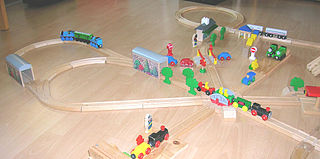 W
WWooden toy trains are toy trains that run on a wooden track system with grooves to guide the wheels of the rolling stock. While the trains, tracks and scenery accessories are made mainly of wood, the engines and cars connect to each other using metal hooks or small magnets, and some use plastic wheels mounted on metal axles. Some trains are made to resemble anthropomorphical, fictional, and prototypical railroad equipment.
 W
WThe history of wooden toymaking in the Ore Mountains is closely bound to regional circumstances. The Ore Mountains are located in Central Europe on the border between Germany and the Czech Republic. For many centuries it was a countryside in which the local population eked out a hard existence from the land. Long and harsh winters restricted agriculture; in addition the region had very poor communications. With the onset of ore mining a new line of commerce developed, but the hard labour and high risks involved meant that it was only work for young and strong men. Many were injured or died as a result of accidents. The miners rose early in the morning whilst it was still dark in order to go to work and did not return home again until late in the evening after dark. From those times comes a custom that has survived to the present day, the practice of placing lights in the window. These lights were intended to show the miners the safe way back to the homes of their families.
 W
WThis is a list of wooden toys and games. A wooden toy is a toy constructed primarily from wood and wood products. Additional components made from other materials are also sometimes used.
 W
WWooden toys of Hrvatsko Zagorje are traditional wooden toys made in the region of Zagorje in Croatia. The method of production, from starting with raw wood to finishing applications of paint, has been passed down from generation to generation, with families continuing to use traditional techniques even in modern times.
 W
WA yo-yo is a toy consisting of an axle connected to two disks, and a string looped around the axle, similar to a spool. It is an ancient toy with proof of existence since 500 BCE. The yo-yo was also called a bandalore in the 17th century.